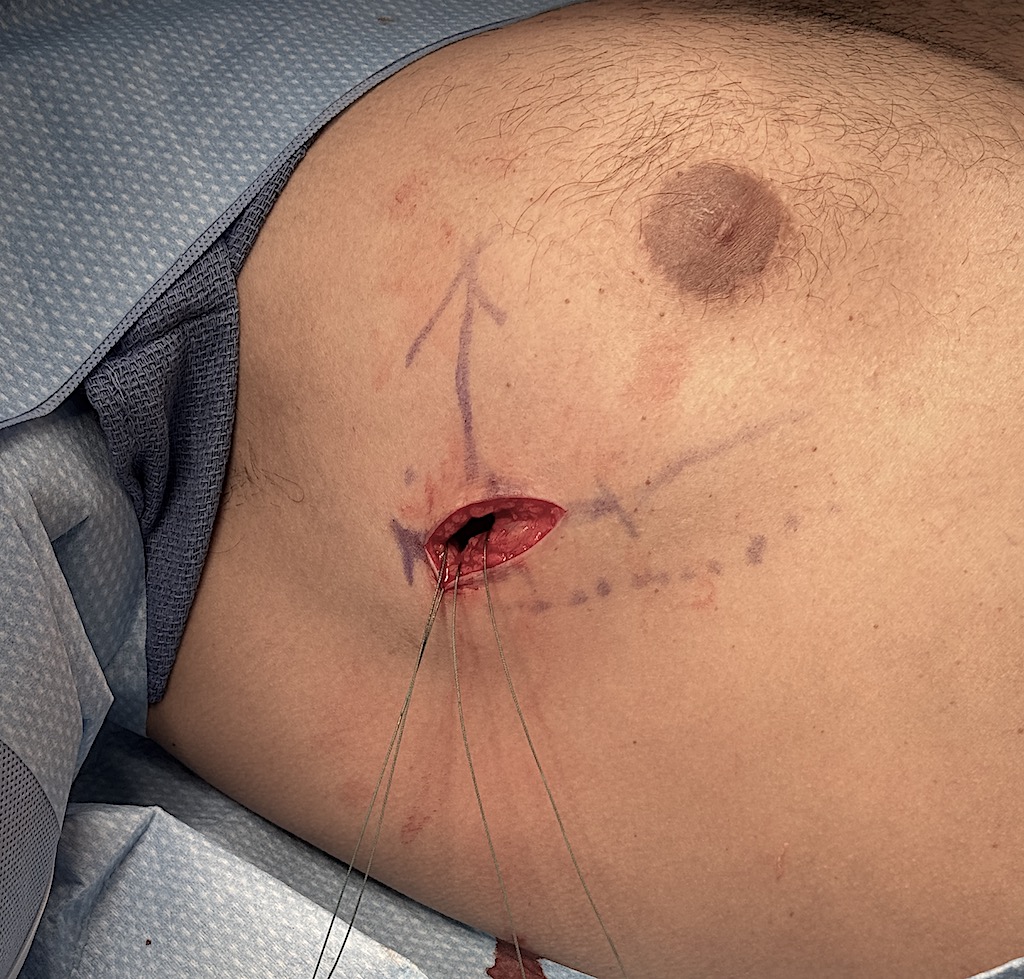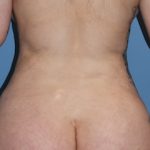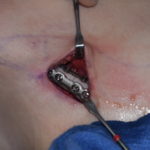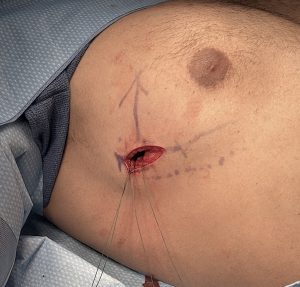Pectoral implants are the only effective surgical method of chest muscle augmentation. They are typically placed through a high axillary incision for direct access to the submuscular pocket between the pectoralis major and the pectoralis minor. The creation of the submuscular pocket is done using instruments through the axillary incision and is essentially done blind guided by external visualization and manual palpation.
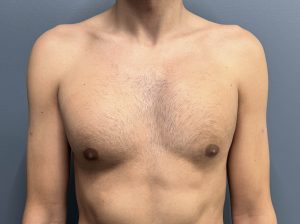
With an overextended lateral pocket the pectoral implant drops more to the side in which improvement can be clearly seen by pushing the implant back up manually. This can be done surgically by closing down the enlarged pocket by suture plication. This is a common technique used all the time in breast implants but the difference in pectoral implants is the lack of a convenient incisional access to do so. It is technically impossible to perform such capsule plications through a high axillary incision.
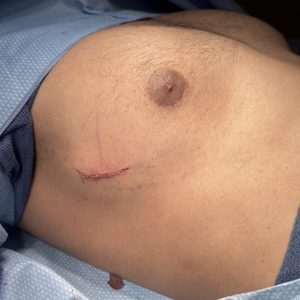
The skin incision is then closed with resorbable sutures and lateral foam and a circumferential binder applied for postoperative compression.
While this does create a scar in a non-hidden location it is really the only way to perform capsular plication of a pectoral implant pocket in most cases.
Dr. Barry Eppley
World-Renowned Plastic Surgeon

